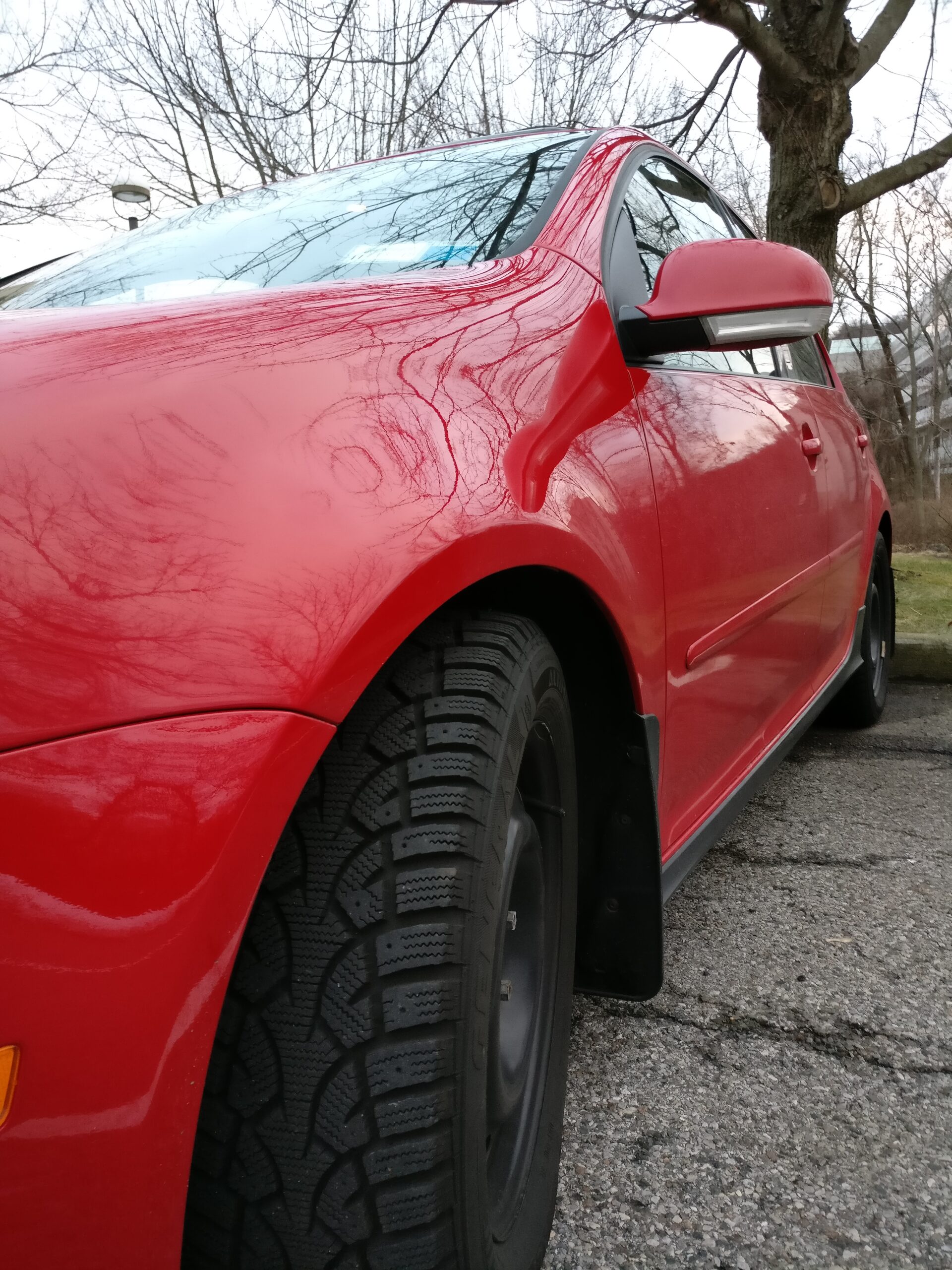by P. Andersen, November 18, 2014

As the temperatures dip into the teens this week (In NOVEMBER?!?!), it is time to think about snow tires. I know, I know, it is too soon to talk about snow tires! Sadly, we are almost to Thanksgiving, and with the goal of keeping you from having a claim or an injury, I am standing on my soapbox and singing the praises of snow tires…
First, if you bought your car up in the northeast, you were given All-Season Tires by default. Many people feel that their all-season tires are designed to survive winter’s wrath, but really they are designed to do everything pretty well. Rain, not bad. Dry, perfectly fine. Snow? Ummmm… Snow? Not so good, really. Should we have another winter like the last one, a good set of snow tires will serve you very well indeed.
Why snow tires? First, read a basic Q&A here, at About Cars… As you can see, snow tires are made of special rubber, they have tread designs specific to the needs of snow and ice, and they make a huge difference in your driving safety when the white stuff falls. Even on dry pavement, the rubber is more pliable in the cold – while your all seasons get hard and brittle in the winter, snow tires stay soft and grippy. If you need your car daily, there is no better investment in the northeast than snow tires, making your front or all wheel vehicle safe and secure as you commute. Another benefit for those of you that have sporty cars? You can buy summer tires for the other 3 seasons, improving your driving in wet and dry during the warmer months.
Two Options…
Option 1: If you have a small or economy car, you likely have wheels in the 16″ – 17″ size range. This is a good size for snow tires, so you can have them installed right on your current rims. This requires a repair shop or tire store to do the install. The benefits are you only have to pay for the tires and installation, the drawback is that you have to pay for that installation twice a year, as you switch between your winter and summer tires.
Option 2: Get a totally separate set of wheels with your winter tires. You may see the term “Steelies” used for steel wheels that are often utilized for this purpose. For those of you with performance vehicles, this option may save you some money, as winter tires for large diameter wheels are expensive and less effective. Winter tires work well on smaller wheels, because the tire sidewalls are larger than the low profile sport tires your car likely came with. My car, for example, has 18′ wheels with low profile tires, but I can get 16′ steelies and winter tires – and pay less for the tires. The drawback to this option is the initial cost, as steelies run from $50 to $100 per wheel, and you may need 4 tire pressure sensors installed as well – a one-time charge, dependent on your car. The benefit is the ease of switching the wheels between seasons yourself if you have a jack, and that you will have the wheels winter after winter. You also save your pretty shiny wheels from the winter salt and punishing ice, making them look better for longer.
Now? Sigh…
Now is the time! Contact the many retailers that sell those winter tires that you need more than you realize. You may be able to get rims off of Craig’s List, or order them online. Store your summer tires for the year (always on their side, stacked), and enjoy the next 4 months without worry. You won’t believe the change in your car after you make this investment! Now drive smart, drive carefully, and get there safe.
